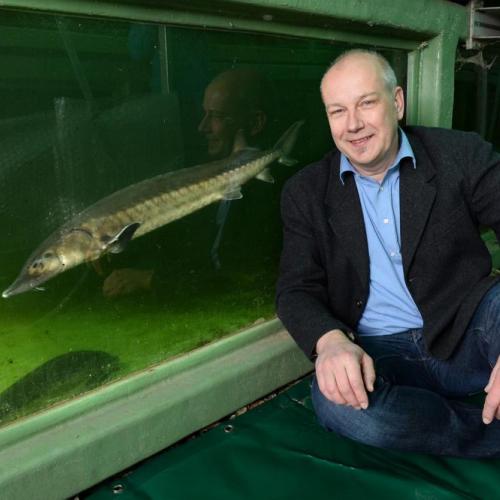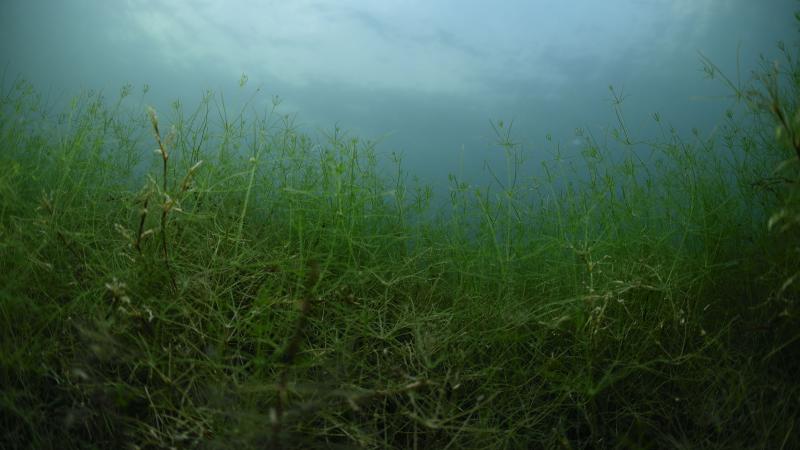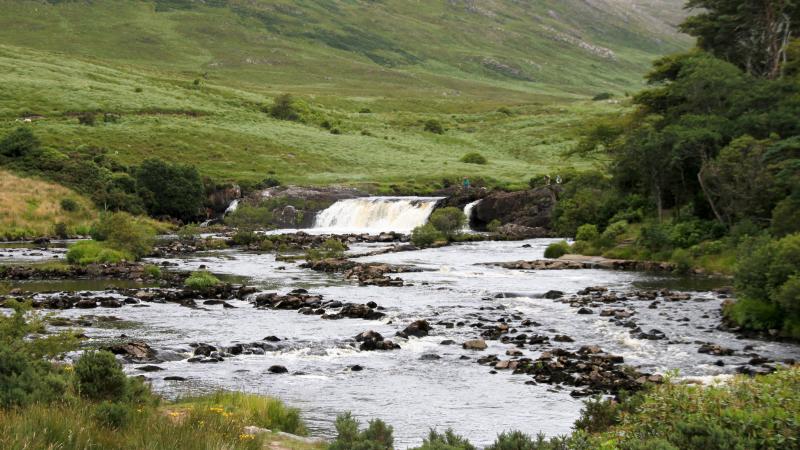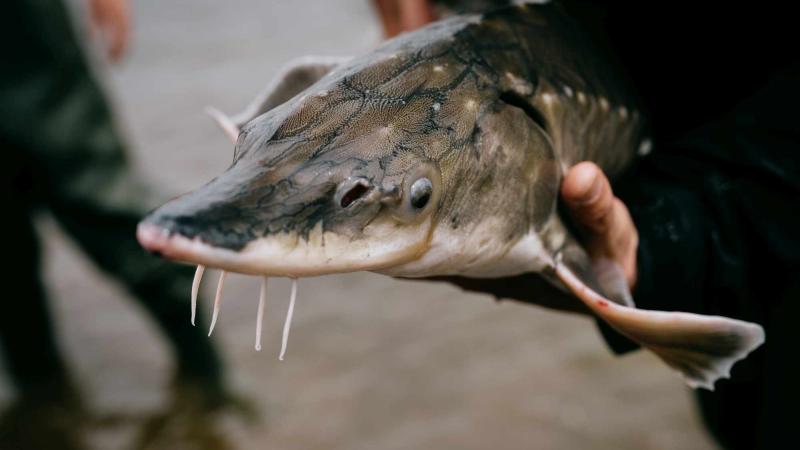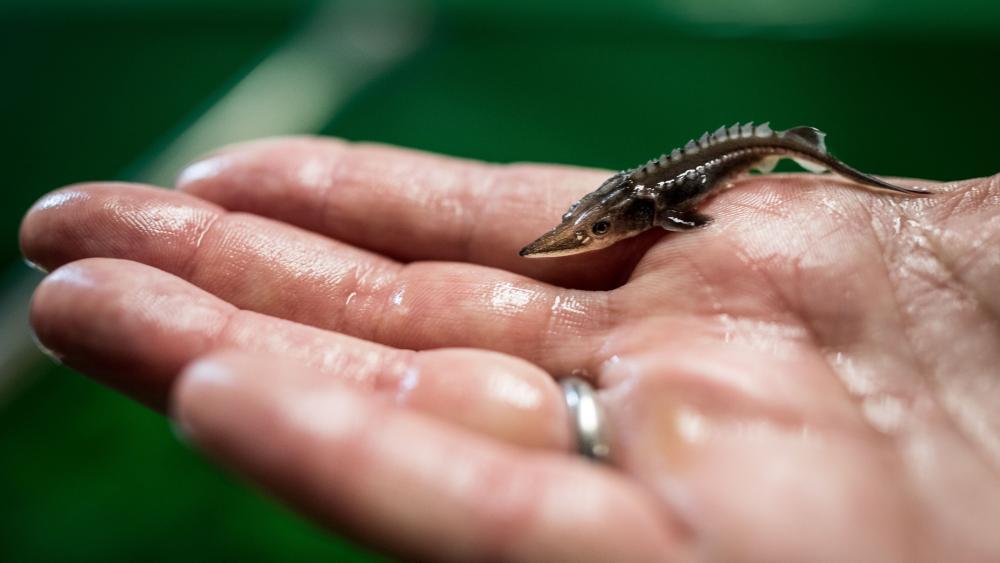
About 2,000 of these small Baltic sturgeon will be stocked in the Oder River. From there they will migrate to the Baltic Sea and hopefully return to the river to spawn in a few years' time. But the journey is dangerous. | Photo: © Nadja Wohlleben Photography
The young fish, most of which measure 10 to 15 centimetres and some of which reach up to 60 centimetres, hold great hopes for species conservation. They originate from the captive broodstock of 29 spawning parents of the rare Baltic sturgeon (Acipenser oxyrinchus), which are reared at the Landesforschungsanstalt für Landwirtschaft und Fischerei (LFA) Mecklenburg-Vorpommern (Mecklenburg-Western Pomerania).
As soon as the small larvae hatch from the eggs, the sturgeon offspring is distributed to breeding stations – such as the one at the NABU Naturerlebniszentrum Blumberger Mühle. There are several of these stations located in Brandenburg and Poland. Two of these – in Friedrichsthal and in Widuchowa – are utilising water from the Oder River to aquaint the fish to their new habitat. In August 2022, this advantageous process was the fate of the juveniles: both facilities were affected by a bloom of the toxic algae Prymnesium parvum, which had previously spread throughout the entire length of the Oder. Around 20,000 young fish died due to a lack of a functioning early warning system on the river.
Luck of the draw for the juveniles at Blumberger Mühle
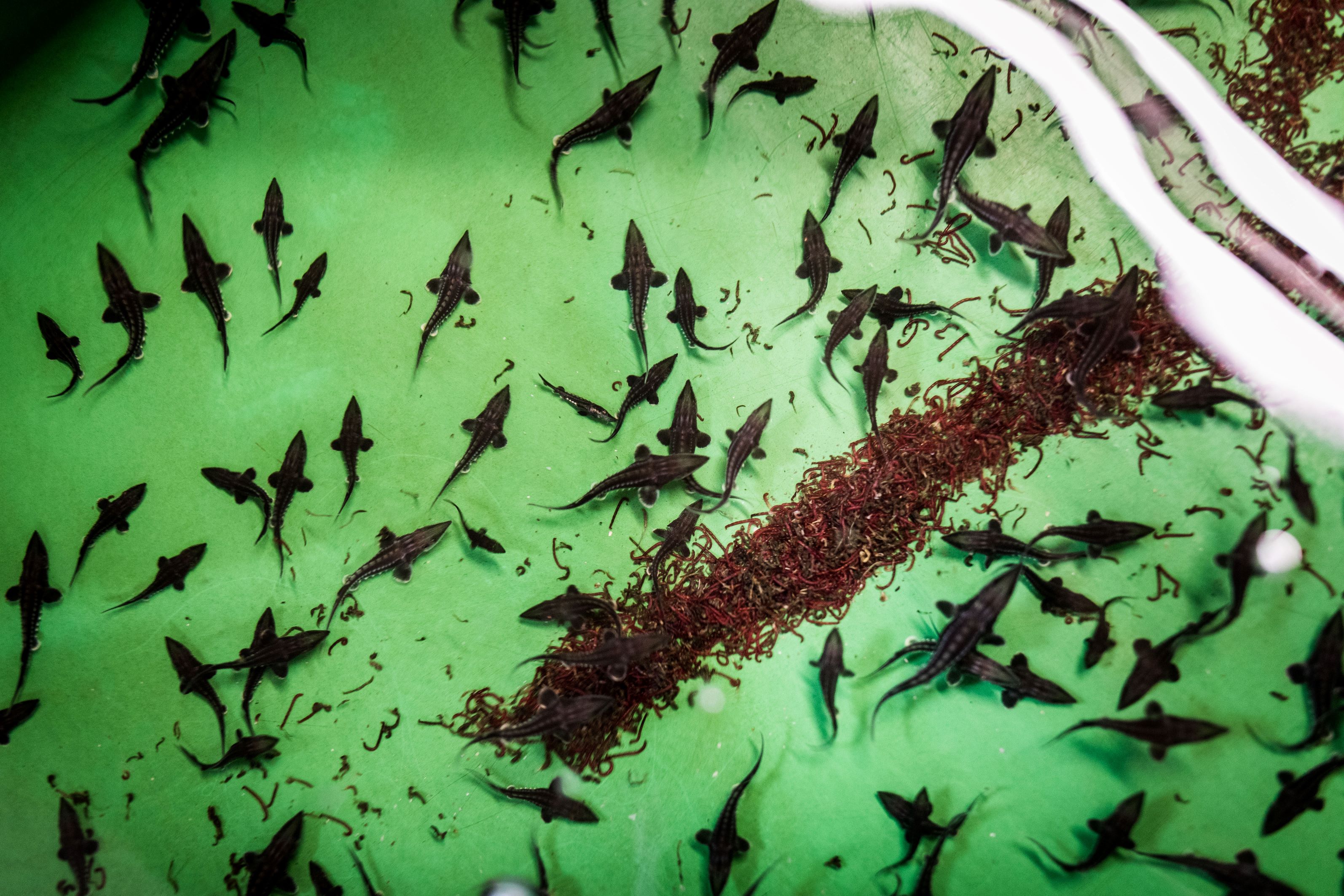
In such tanks, the fish grow up in breeding stations. | Photo: © Nadja Wohlleben Photography
The animals to be stocked on Monday hatched in July 2022. They were lucky: no water from the Oder River reached the Blumberger Mühle. However, for a long time it was unclear when the little sturgeons would find suitable living conditions in the Oder again. So they had to spend the winter in the rearing facility. The Gesellschaft zur Rettung des Störs e.V. (Society for the Conservation of the Sturgeon) financed this unplanned temporary shelter with donations from the WWF.
Now that the animals in the Oder are no longer acutely endangered by the algal bloom, the stocking measures are resuming with actions throughout the Oder River basin in Germany. On 8 May, in addition to the stocking near Stützkow, an action of the LFA will take place near Criewen. Since 2007, the partners have been stocking sturgeon in the Oder every year - a total of around 3.5 million fish so far, and around 6 million in the Baltic Sea region as a whole.
The researchers try to select fish of different ages and sizes. "While very young fish are expected to adapt better to the environmental conditions, larger fish have a lower risk of falling prey to predators, so stocking with fewer but larger fish offers similar chances of success," explained IGB researcher Dr Jörn Geßner, who is coordinating the sturgeon reintroduction programme.
Living conditions in the River Oder to be observed
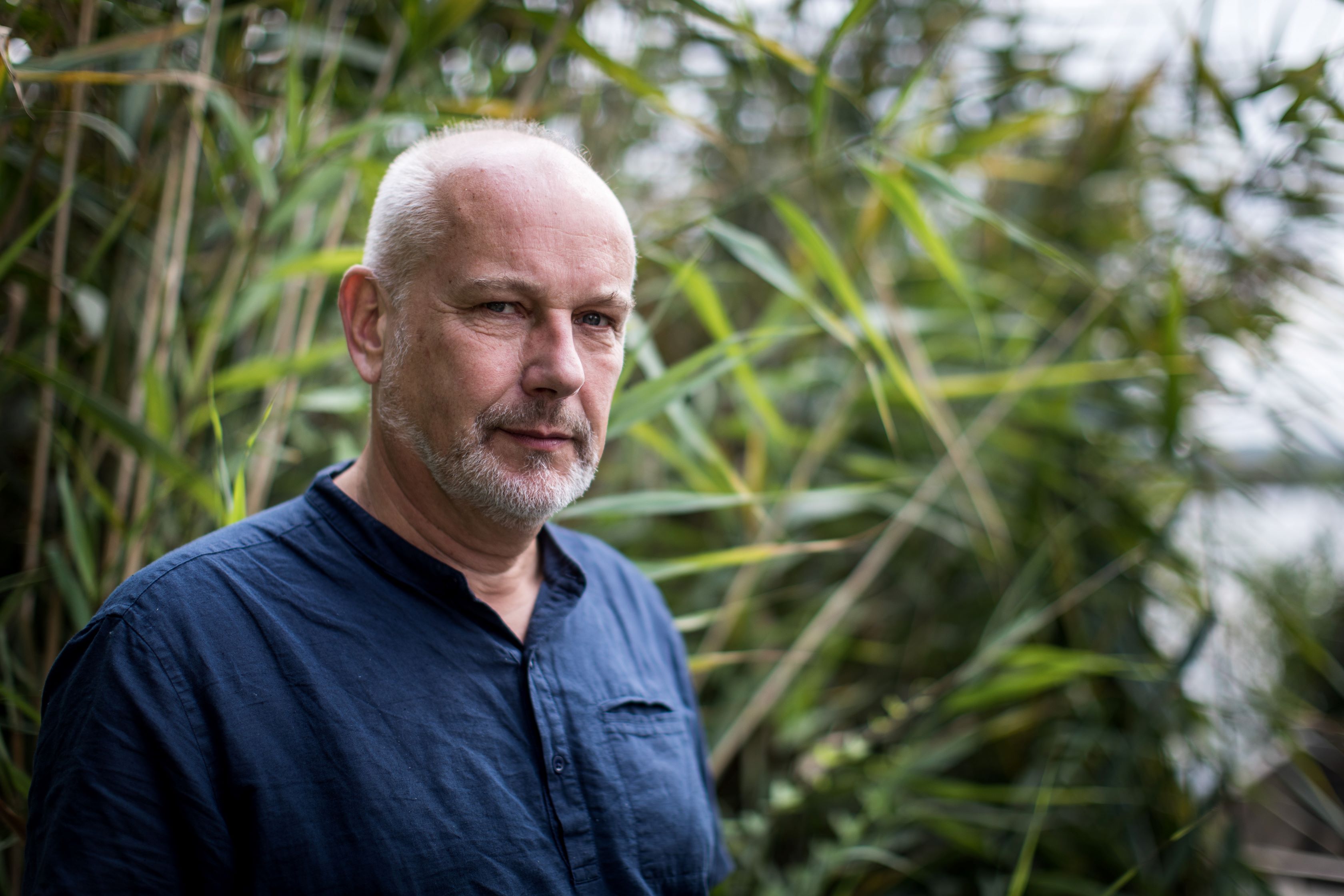
IGB researcher Dr Jörn Geßner is worried that the fish kill in the Oder River could reoccur. | Photo: © Nadja Wohlleben Photography
In the Oder River, the young sturgeon not only have to watch out for predators such as catfish, pike-perch and pike. "The greatest danger at the moment is that the dramatic fish and mussel mortality of the summer of 2022 will reoccur," said Geßner.
As part of a research programme funded by the German Federal Ministry for the Environment (BMUV), IGB researchers are therefore analysing the conditions under which the brackwater algae Prymnesium parvum, which can still be found in low densities in the river, produces toxins. They also want to find out how different levels of this toxin affect the different life stages of sturgeon, as well as other fish species, mussels and macrozoobenthos.
In addition, the scientists are taking water samples at regular intervals to test for algae and pollutants. "The fact that stocking is now possible is also a good signal for the abundance and reproduction of other important river fish species. However, another toxic algal bloom in the Oder is not unlikely, as the river's salt and nutrient load is still too high," emphasied Jörn Geßner.
River and port development pose additional threats to sturgeon
During their migration, sturgeon face other anthropogenic threats such as fishing, ship collisions or suction dredgers in the river channel. In particular, the planned development of the Oder River will result in further habitat loss for sturgeon and other riverine fish species.
The lagoon is also affected: "The expansion of ports between Usedom and Szczecin will have a long-term impact on the ecosystem. For example, we expect massive changes in the flow conditions," said the biologist. "In addition, the construction work will lead to increased sediment loads and saltwater inputs." This will affect the use of habitats in the lagoon and the migration routes of the animals, which are expected to return to the Oder to spawn in the coming years.
Better monitoring planned
In order to avoid, at least in the short term, losses due to toxic algal blooms or other toxins and pollutants dissolved in the water in the rearing facilities, the Friedrichsthal facility will be equipped with an additional water treatment system. Alternatively, it will be retrofitted to be able to operate on well water.
Jörn Geßner's team is also working with regional partners, including the LFA Mecklenburg-Western Pomerania, WWF, NABU and Rewilding Oder Delta, to set up telemetric monitoring in the Szczecin Lagoon. They want to find out if and how the tagged sturgeon migrate into the Baltic Sea and, if so, where and when they return.
Read about what happened in the summer of 2022 on the Oder River>
And why many (other) sturgeon species worldwide need migration corridors >


